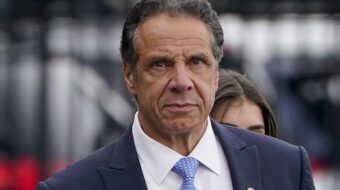Concern is growing that an economic recovery, if and when it comes, may not be much of a job generator.
The talk among many economists these days is that the economy may “recover” without an increase in the number of available jobs. All the economic indicators can get better, they say, but the jobless rate can remain high.
The “recovery” they are talking about, of course, is a recovery for Wall Street, not Main Street.
The Wall Street Journal put it this way earlier this week: “Despite indications that the worst monthly job declines are over, the road to recovery will be bumpy for the next year. Employers remain unsettled from a turbulent financial crisis. So many millions of people are out of work that absorbing them back into new jobs will take time.”
For its part, the Obama administration is making an effort to stem at least part of the unemployment problem.
Vice President Joe Biden said earlier this week that the Obama administration is confident it will create 600,000 jobs in the next 100 days with spending from the federal economic stimulus package.
The second part of the American Recovery and reinvestment Act includes a wide range of government projects that involve keeping police officers on the job, energy efficiency projects in national parks and improvements for 100 veterans’ medical centers in many states.
Four thousand infrastructure improvement projects have already been approved for highways, transit systems and airports.
At a telephone press conference the vice president said, “You’re going to see an awful lot of activity all across America.”
Biden, who is heading up the stimulus plan, said that 150,000 jobs were either saved or created in the first 100 days. His assessment is actually quite reasonable, given the fact that job losses in May were well below the average monthly loss of more than 643,000 jobs in the previous half year.
The May numbers, however, “should be put into a larger context. Before the current recession the decline in employment in May would have been the second largest monthly decline in a quarter century,” wrote Heidi Shierholz in a June 5 article published by the Economic Policy Institute. ”It is only in the midst of a historically steep recession that losing 345,000 jobs in a single month is actually taken as a good sign.”
Another negative trend Shierholz pointed to in the most recent government jobs report was the “continued dramatic collapse of wage growth.”
The recent collapse of wage growth, she says, the last labor market indicator to deteriorate in the current recession, means that the recession is hurting even those who keep their jobs and is putting downward pressure on consumption, which, in turn, slows any economic recovery.
The EPI report notes that the millions of jobs that have been lost and the additional millions that will be lost in this recession tell only part of the story. Since the nation’s population continues to grow the economy must add 127,000 jobs every month. It should have added 2.2 million jobs, then, during the 17 month life of this recession. Instead, it lost more than 6 million jobs, meaning that we are 8.2 million or more jobs below where we would need to be just to maintain pre-recession employment rates.
Republican National Committee Chairman Michael Steele questioned Biden’s job creation numbers this week, saying they have not lived up to President Obama’s promise.
“Republicans want to work with the president to get our economy back on track, but the president seems intent on promoting and adopting some of the most liberal and reckless government intervention economic policies ever seen,” Steele said.
The GOP proposal of course is that the government do nothing to solve the crisis or that, if anything, it should increase tax breaks for the wealthy – the very course that led to the current crisis.
The only thing that has made even a dent in the crisis is the government action put forward by the administration.
The issue is not that the government should refrain from intervention but that the intervention should be on a bigger and broader scale. We will need additional large “stimulus” packages and we will need entirely new bold approaches that put the needs of workers and their communities ahead of the needs of corporations out to make a profit.
During the Great Depression and the period leading up to World War II, for example, car factories in Detroit were idle. President Roosevelt and the United Auto Workers put together a deal that addressed the nation’s need to put people to work and the nation’s need to produce warplanes for the fight against fascism. The unemployed in Detroit and elsewhere got good jobs and fascism was defeated. The end result was good for business but the starting point of the plan was not “what do we do to make the car companies profitable?” The starting point was “what is in the best interests of the country and its workers?”









